Search results for 'sam browne'
-
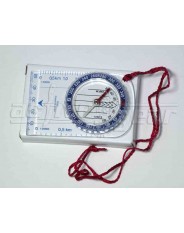
Active Gear Compass
Orienteering, rescuing or serious hiking requires a great compass. It has an anatomically designed base plate, with rounded edges and anti-slip rubber pads. Magnetic compass contains a magnet that interacts with the earth’s magnetic field. It was adapted for navigation during the Song Dynasty in the 11th century.
$14.99 -
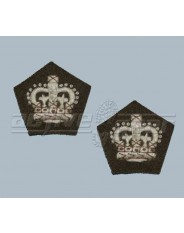
Badge of Rank - Worsted Crowns
The first British Army rank insignia were introduced in 1760. Badges for field officers were first introduced in 1810. These badges consisted of (and still consist of) crowns and pips. These rank insignia were worn on shoulder epaulettes.
$9.99 -
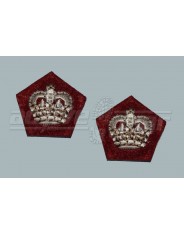
Badge of Rank- Worsted Crowns
The first British Army rank insignia were introduced in 1760. Badges for field officers were first introduced in 1810. These badges consisted of (and still consist of) crowns and pips. These rank insignia were worn on shoulder epaulettes.
$9.99 -
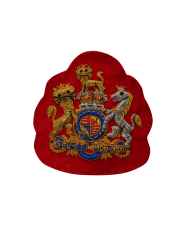
Ceremonial Badge of Rank- Warrant Officer Class 1
In the Caribbean, our rank insignia are adopted from the British Army rank system. Warrant Officer class I (WOI) wears an embroidered Royal Coat of Arms on khaki, scarlet or royal blue backing on the lower sleeve of the Ceremonial dress. Additionally, an embroidered Royal Arms with red, green or blue border is worn on the lower sleeve of the Service Dress. Here at Active Gear Limited we sell Royal Arms on khaki, blue or scarlet backing for ceremonial dress and red, blue or green bordered Royal Arms for Service Dress. Additionally, we supply embroidered gold and scarlet backing WOII, RQMS and Staff sergeant crowns for Ceremonial and Mess Dress.
$26.63Out of stock
-

Ceremonial Badge of Rank- Warrant Officer Class 1
Here in the Caribbean, our rank insignias are adopted from the British Army rank system. Warrant Officer class I (WOI) wears an embroidered Royal Coat of Arms on khaki, scarlet or royal blue backing on the lower sleeve of the Ceremonial dress. Additionally, an embroidered Royal Arms with red, green or blue border is worn on the lower sleeve of the Service Dress. Here at Active Gear Limited we sell Royal Arms on khaki, blue or scarlet backing for ceremonial dress and red, blue or green bordered Royal Arms for Service Dress. Additionally, we supply embroidered gold and scarlet backing WOII, RQMS and Staff sergeant crowns for Ceremonial and Mess Dress.
$26.63 -

Ceremonial Badge of Rank- Warrant Officers and Staff Sergeants
Here in the Caribbean, our rank insignias are adopted from the British Army rank system. Warrant Officer class I (WOI) wears an embroidered Royal Coat of Arms on khaki, scarlet or royal blue backing on the lower sleeve of the Ceremonial dress. Additionally, an embroidered Royal Arms with red, green or blue border is worn on the lower sleeve of the Service Dress. Here at Active Gear Limited we sell Royal Arms on khaki, blue or scarlet backing for ceremonial dress and red, blue or green bordered Royal Arms for Service Dress. Additionally, we supply embroidered gold and scarlet backing WOII, RQMS and Staff sergeant crowns for Ceremonial and Mess Dress.
$24.21Out of stock
-

Ceremonial Badge of Rank- Warrant Officers and Staff Sergeants
Here in the Caribbean, our rank insignias are adopted from the British Army rank system. Warrant Officer class I (WOI) wears an embroidered Royal Coat of Arms on khaki, scarlet or royal blue backing on the lower sleeve of the Ceremonial dress. Additionally, an embroidered Royal Arms with red, green or blue border is worn on the lower sleeve of the Service Dress. Here at Active Gear Limited we sell Royal Arms on khaki, blue or scarlet backing for ceremonial dress and red, blue or green bordered Royal Arms for Service Dress. Additionally, we supply embroidered gold and scarlet backing WOII, RQMS and Staff sergeant crowns for Ceremonial and Mess Dress.
$26.63Out of stock
-

Chevrons- Standard
In the Caribbean, one chevron designates a lance corporal, two a corporal, and three a sergeant. A Staff/Colour Sergeant wears chevrons similar to that of sergeant with a crown placed above the chevrons. This insignia is worn on the right shirt or jacket sleeve of the uniforms. Chevrons worn in the Caribbean are usually either worsted embroidered (Green, Khaki or white) or machine stitched (black or white).
$0.50Out of stock
-

Coast Guard Peak Cap
On navy caps or coast guard caps, the peak and chinstrap of the service cap are always black. On both navy and army caps, the chinstrap is affixed to the cap via two small buttons, one roughly over each ear; these buttons are miniature versions of the buttons on the service dress tunic, and as such bear an environmental or regimental device.
$45.99Out of stock
-
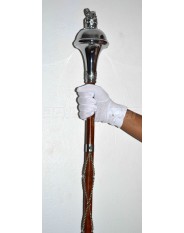
Drum Major Mace
The mace has long been associated as a symbol of authority. The mace is not simply a designation of authority but is used by defined drill movements to signal commands to the band. The mace is fashioned from base metal or Sterling silver, finished in silver plate or gold gilt. The average length overall of a mace is 58 inches.
$299.99 As low as: $249.99



